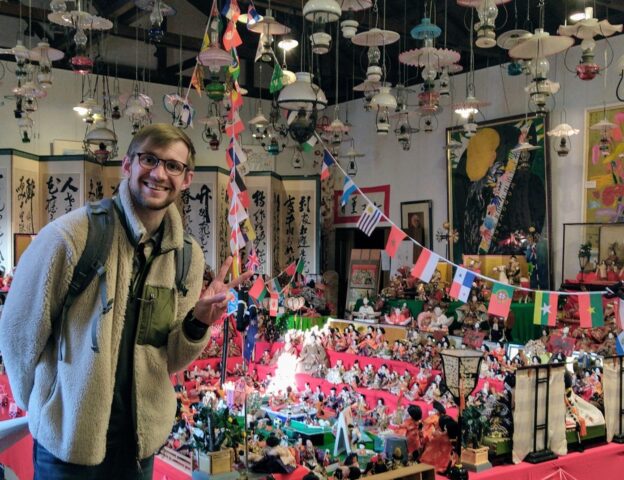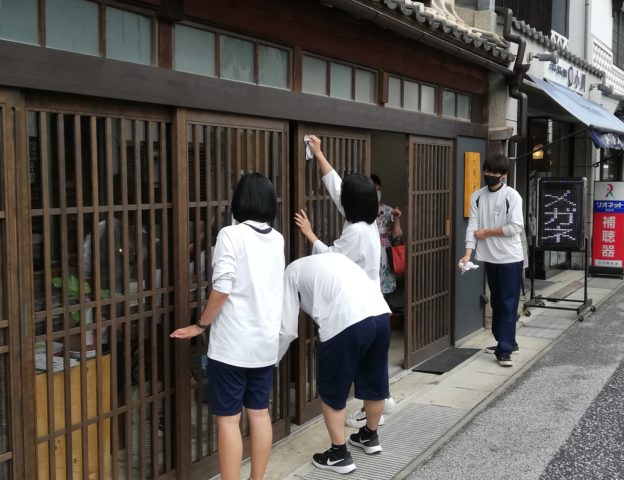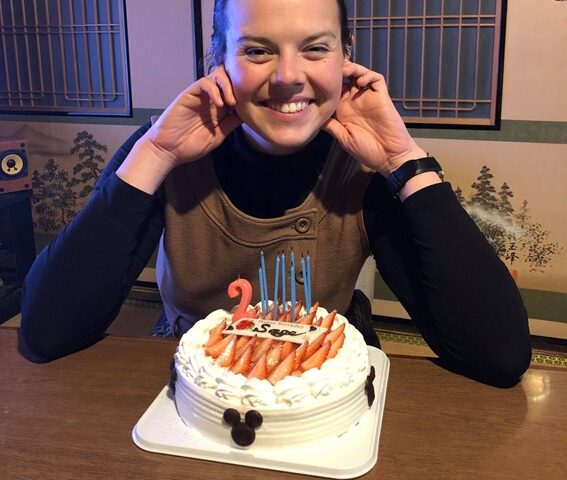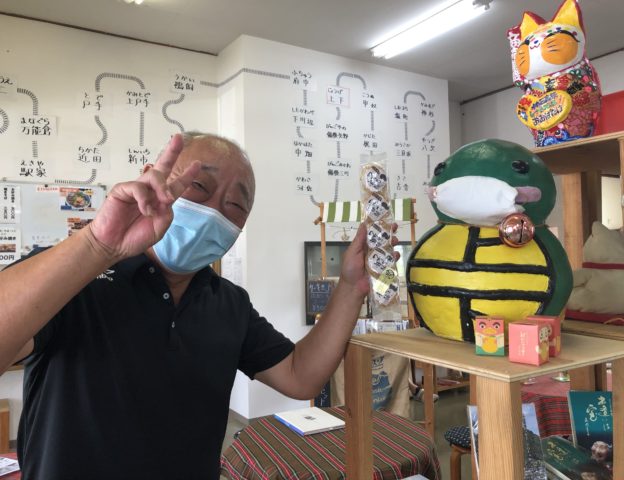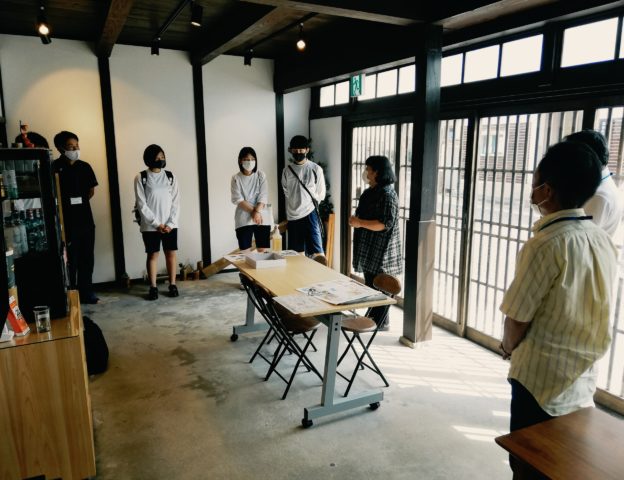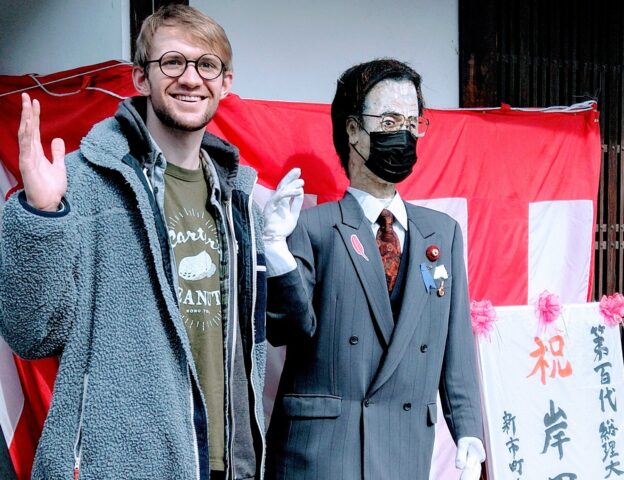A Trip down Joge’s Historical Main Street
Hello there everyone! This is Mary, back with another entry in my JOGE blog series. Joge is a small town in northern Hiroshima where the charm of traditional Japanese lifestyle, architecture, and hospitality abounds. It is my hope that by writing English content about Joge, many people will come to know and love this town like I do.
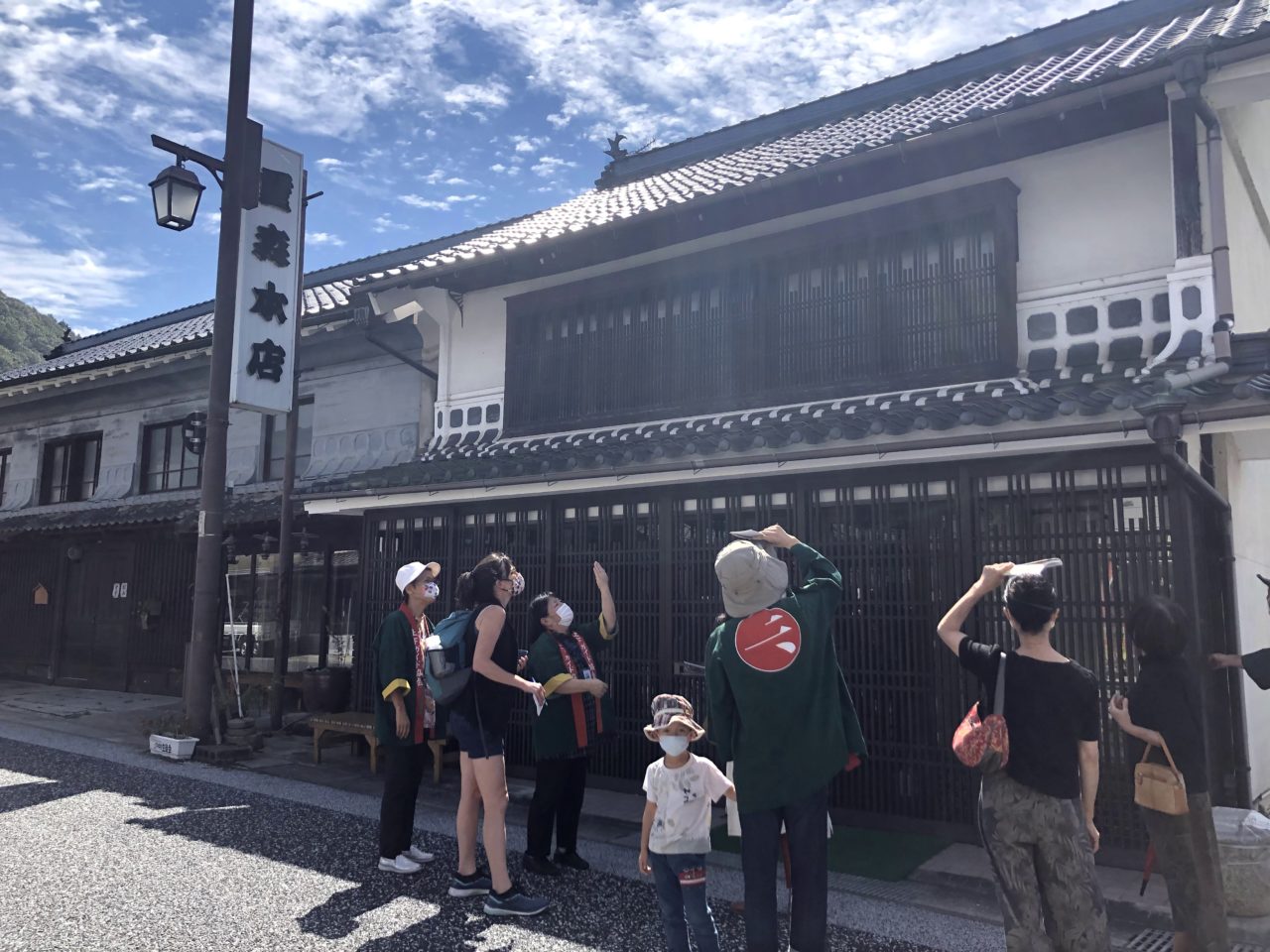
As I’ve mentioned in blogs past, Joge was a tenryou territory, meaning it was under direct control of the Shogunate, the rulers of Japan. It was a prosperous town in the center of the “Silver Highway,” responsible for sending funds to the Tokugawa and Meiji regimes. Almost everyone in town did some sort of work related to finance or lending. Some even owned inns or shops in addition to this work. Walking down Joge’s main street, one can still feel the lingering tenryo culture and get a sense of the bustling, Edo-era Japanese Wall Street.
A few weeks ago, some local guides treated a friend and I to a tour of this historical thoroughfare. Joge’s main street reached its peak use during the Edo period, and many of the buildings along the street have been carefully preserved since then.
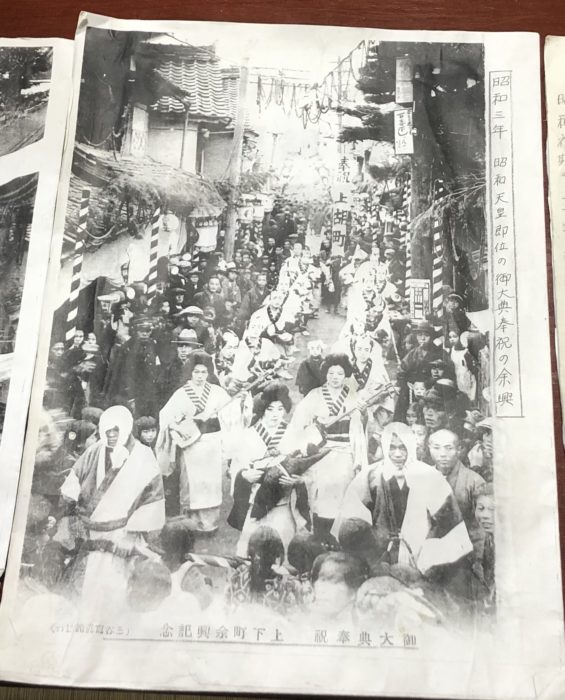
The photo below was taken in 1928 during a local festival. As you can see, this street used to be quite narrow, packed with vendors, signage and people.
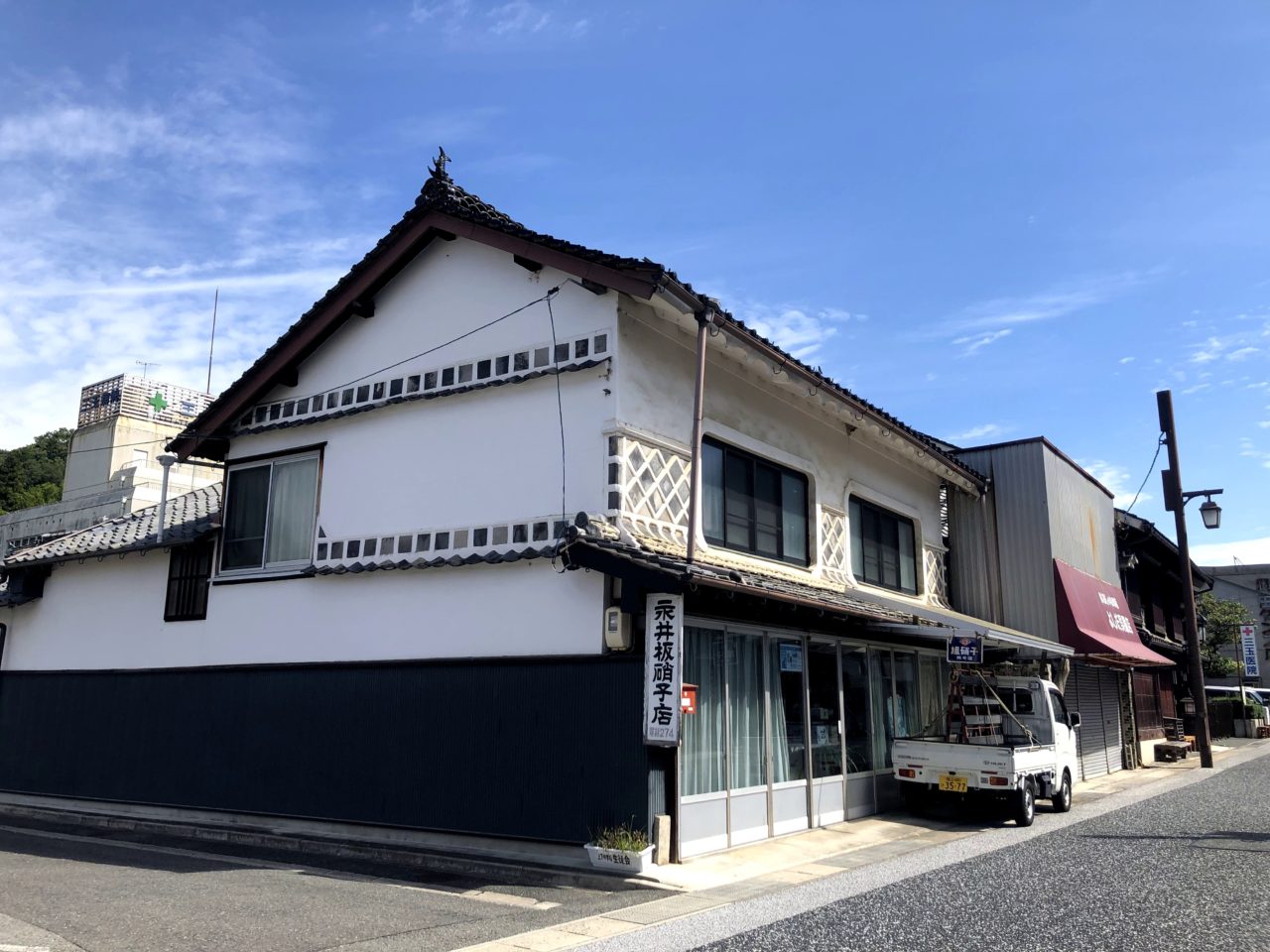
Today, Joge’s main street is much wider. In the mid-1930s, when war seemed imminent, the street was widened in order to transport large cargo for the military. As a result, the roofs of many of the merchant homes were cut back as far as one to two meters, as you can see in the picture below.

The highlight of Joge’s main street are the merchant homes. Each one has it’s own historical crest, like this one. The owners of these merchant homes were quite wealthy. They flaunted their status by gilding their homes with patterns and adornments.
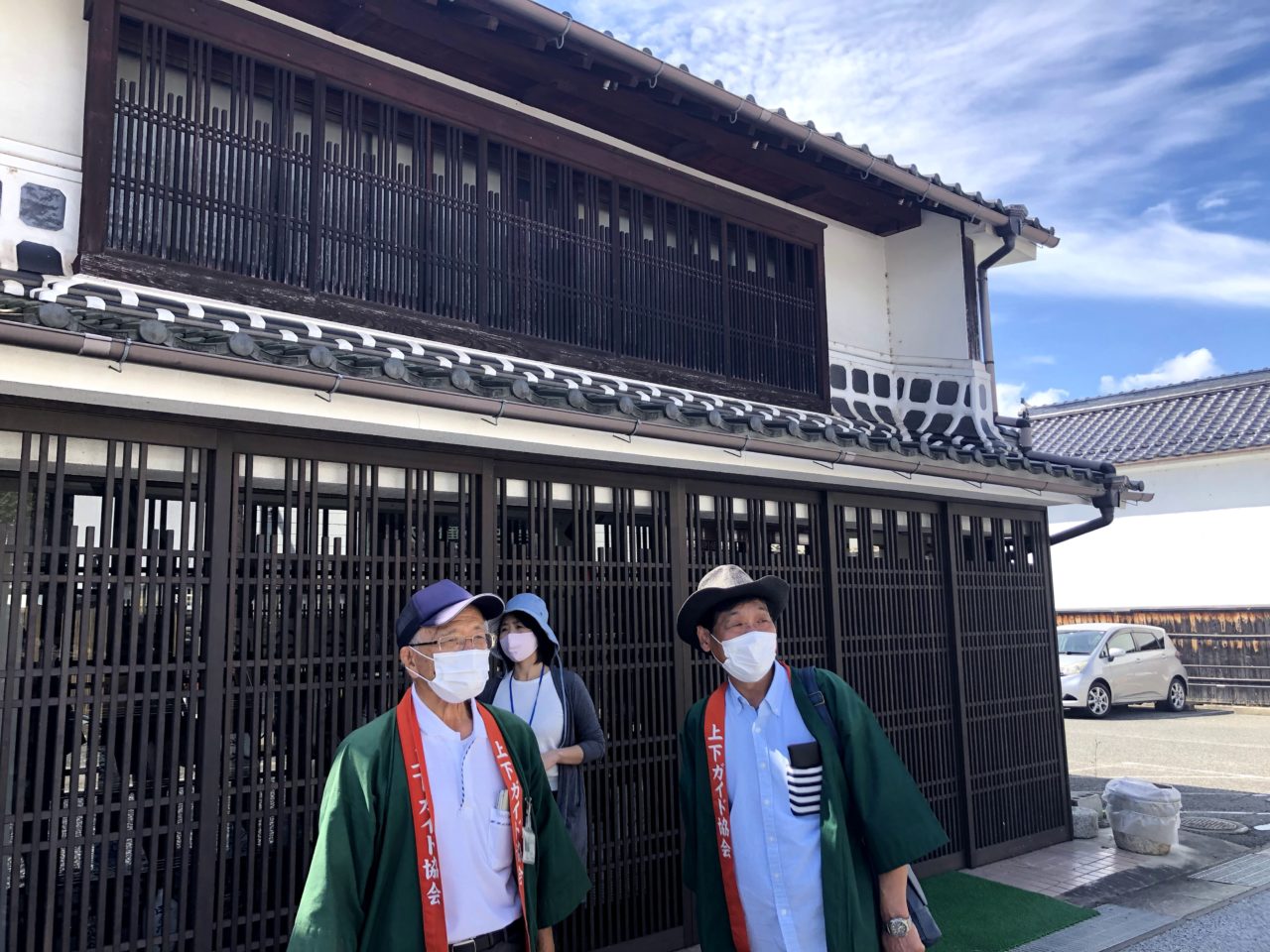
One example is the udatsu, a slightly raised embellishment on both ends of merchant townhouses. They had several purposes, including separating one house from the next, preventing the spread of fires, and hindering break-ins from the roof. In Tenryou Joge, they were symbols of prosperity and status. You can see an udatsu on the right-hand second-story wall of the building pictured below.
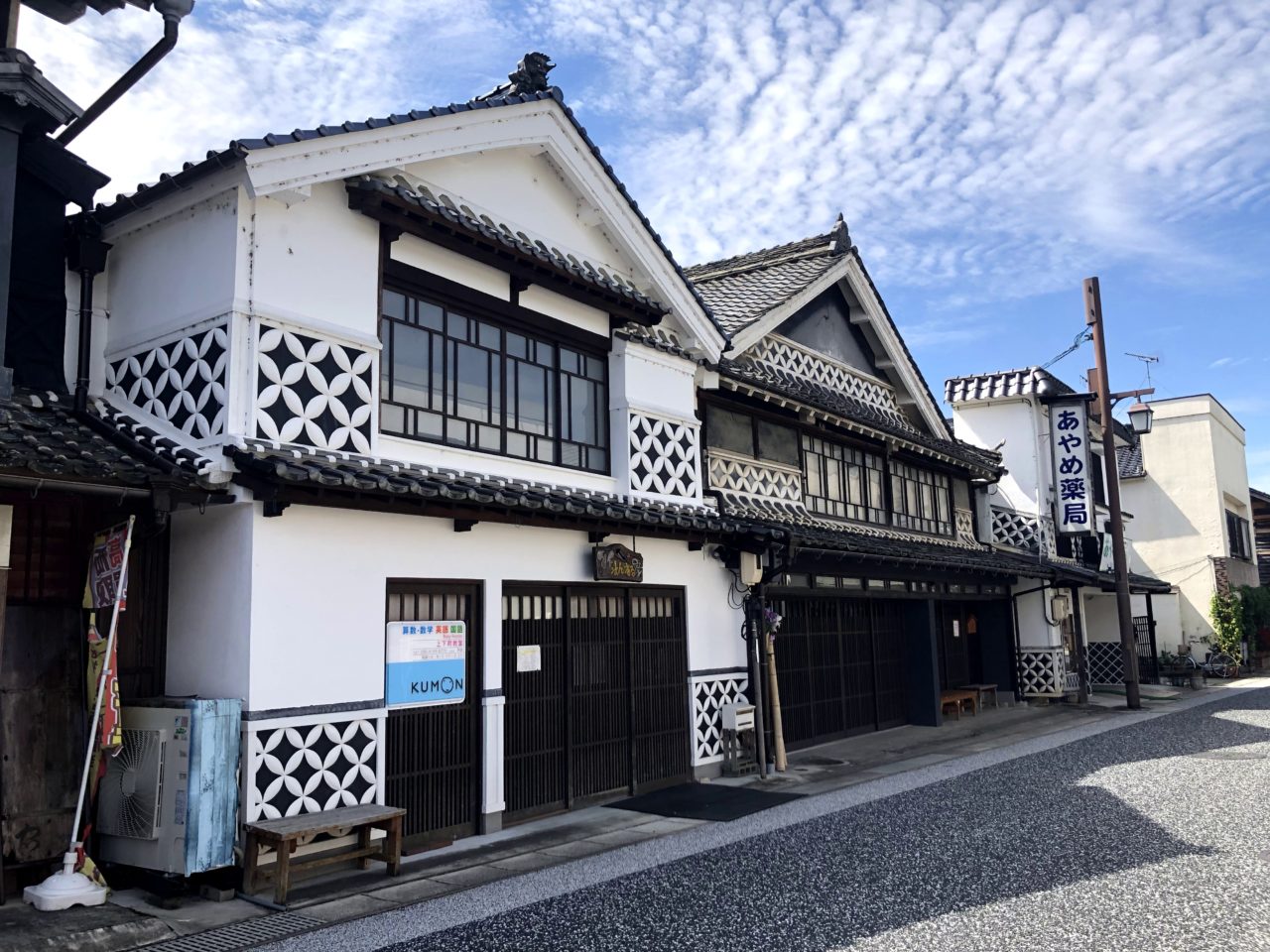
Another hallmark of Joge’s townscape are namako kabe—durable, fire resistant walls made by plastering flat roof tiles together in a pattern that reminded locals at the time of sea-cucumbers (namako means sea-cucumber in Japanese). Joge Town actually offers a course for artisans looking to learn and pass down this plastering technique.
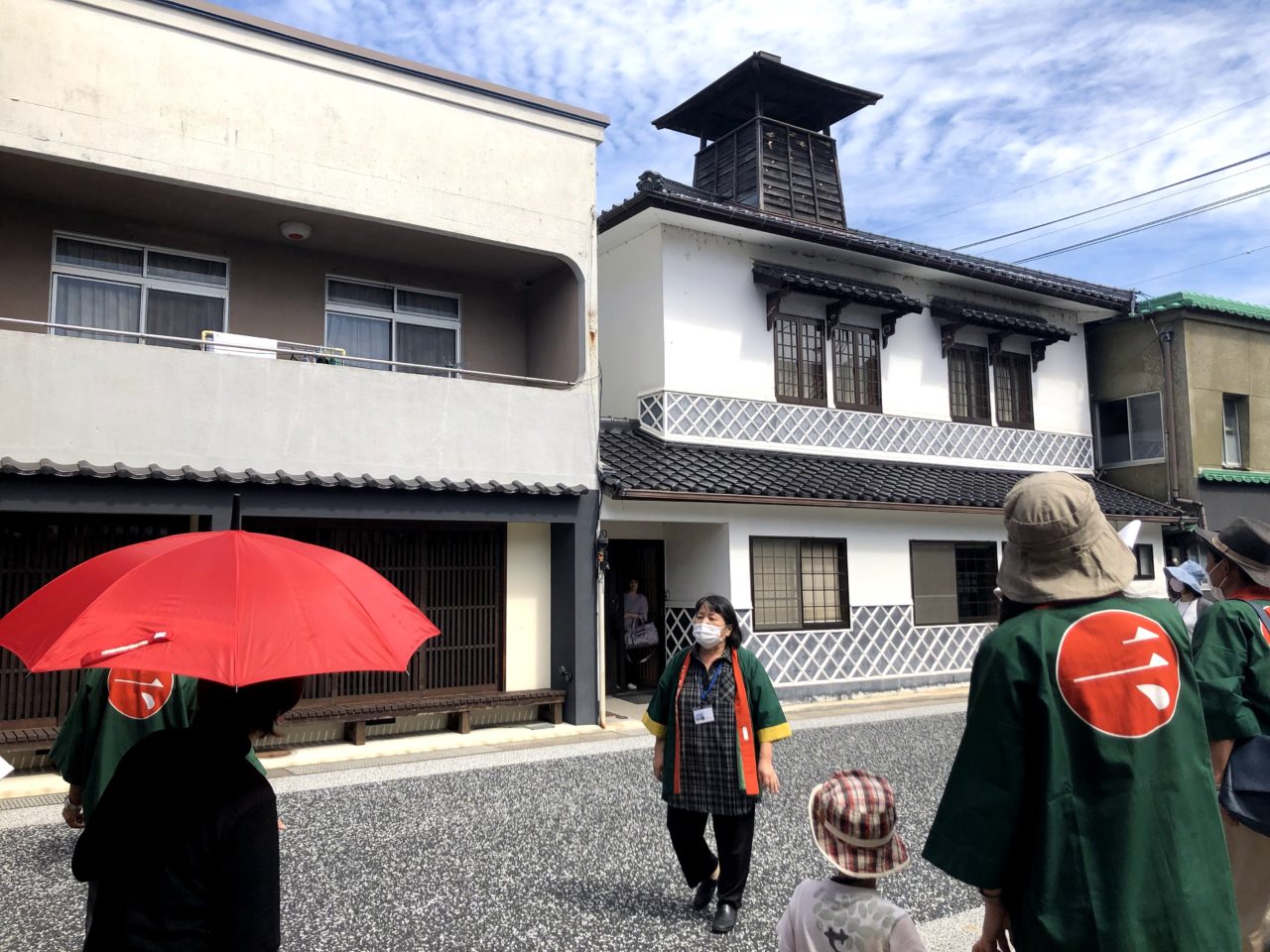
Now to introduce a few iconic buildings on Joge’s main street. In the Meiji era, this building functioned as Joge’s police office and fire station. The fire lookout tower above the roof is preserved in its original state.

Another must-see on Joge’s main street is the Yoshida Main Store, an impressive black-plaster building that also features namako-patterned walls. This kimono shop spans two buildings, and boasts the largest storefront in Joge. Most of Joge’s homes and shops are long and narrow. This is because, during the Edo period, property tax was was paid according to the width of a building’s front entrance. The Yoshida Main Store was built in the Meiji period after tax systems had changed, allowing it the freedom to spread out.
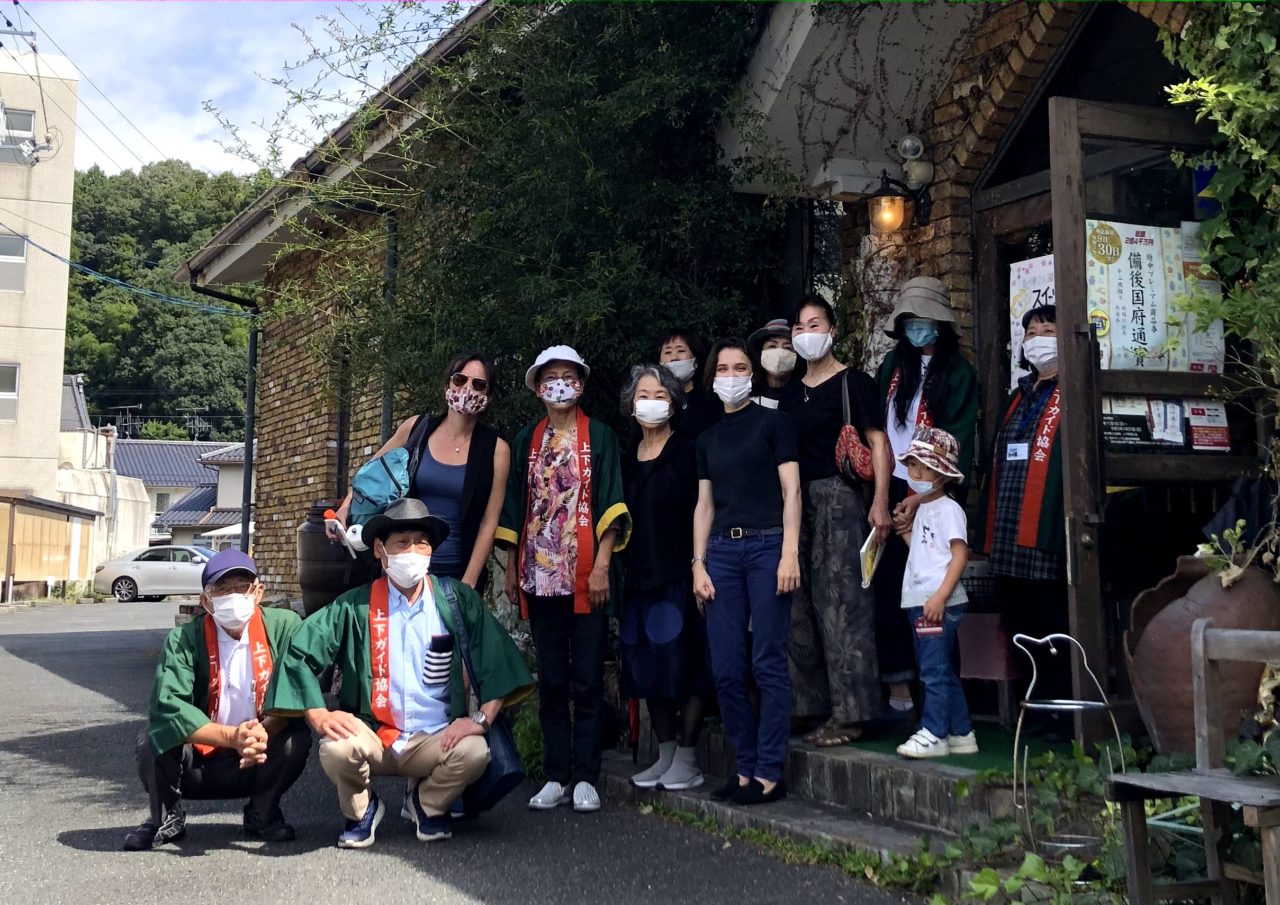
I’d like to give a big thank you to the dedicated guides who taught us so much about Joge’s history. As I always say, the true heart of Joge is the warmth and hospitality exhibited by the local people, who are committed to preserving their culture, lifestyle, and townscape for future generations to enjoy. See you next time!

Mary Popeo has lived in Hiroshima Prefecture for four years, three of which she spent in Joge. She is passionate about sharing the magic of the Japanese countryside with people from around the world. Mary currently works at a peace education nonprofit in Hiroshima City, and collaborates with Fuchu City and the Joge Town to plan programs for inbound English-speaking tourists.
=========<日本語>=========
皆さん、こんにちは!メアリーです。
上下町は伝統的な日本の生活様式や建築様式、そしておもてなしの魅力にあふれた広島県北部の小さな町。こうして英語で説明することで、海外の皆さんも上下町を知ってくださり、私のように好きになってくださると嬉しいなと思っています。
今までもこのブログでお話してきましたが、上下は幕府直轄の天領地でした。
銀山街道の中心として町は栄え、徳川幕府や明治政府への経済支援もしていたようです。
多くの町民が何らかの形で金融に関わる仕事をしていて、中には宿や店を構えた人もあり、本通りを歩くと江戸時代の日本版ウォールストリートといえる天領時代の文化が、いまだに息づいているのを感じることができます。
数週間前、私は友人と地元のガイドさんにこの歴史ある通りを案内していただきました。
本通りは江戸時代に最盛期を迎え、以来、通りの建物の多くは慎重に保存されてきたのです。
下の写真は1928年に撮られた祭りの様子です。道はとても狭く、お店と看板と人でいっぱいです!
現在の通りはずっと幅が広くなっています。戦前の1930年代半ば頃に軍用物資を運ぶため道幅は拡張されました。たくさんの商家の屋根は写真でも分かる様に、1~2mも切り取られることとなったのです。
本通りの一番の見どころは商家です。この写真のようにそれぞれに歴史的な趣があります。持ち主はとても裕福で、形や装飾を施してステータスを誇示していたようですよ。
商家の両端に細く掲げられている「うだつ」がその一例。隣家との境界の他、延焼防止や屋根からの侵入防止などの目的がありましたが、上下町では富の象徴として用いられていたようです。写真の二階右端の壁に見えるのが「うだつ」です。
上下の特徴と言えば「なまこ壁」もあります。(海の)なまこを連想させる型を施した漆喰の壁で、耐久性もあり防火壁ともなります。この漆喰の技術を観て学べる…上下は職人の方たちには絶好の学びの場ですね。
本通りにある象徴的な建物をご紹介しましょう。明治時代、この建物は警察署と消防署を兼ねていました。屋根の上の火の見櫓は当時のまま保存されています。
この他、ぜひご覧いただきたいのは印象的な黒漆喰になまこ壁も施されている「吉田本店」の建物です。以前、呉服店を営んでいたこの店は2棟がつながっていて、町内で一番広い店先が誇らし気です。江戸時代、固定資産税は間口の広さによって支払われていたため、ほとんどの家や商店は奥深く狭いのですが、吉田本店は明治に入り税制が変わってから後に建てられたので、自由に間口を広げることができたそうです。
上下町の歴史についてガイドの方々にたくさんのことを教えていただき、本当に有難とうございました。上下の町で一番素晴らしいのは、文化や暮らしそして町の風景を次世代へと繋ぐために献身的な地元の皆さんの温かさとおもてなしの心だと思います。
メアリー・ポペオ
広島県在住歴4年、そのうちの3年間を上下町で過ごす。来日した海外の人たちと広島県の田舎の魅力を共有することが願い。現在は広島市内で非営利の平和教育団体で働いており、府中市や上下町とも協力しながら英語圏からの旅行者の受け入れなどの企画をしています。
– Translation by Chizuko Inagaki

